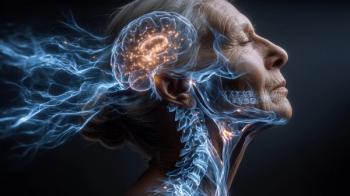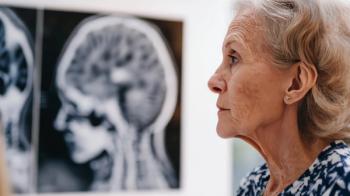
Swedish Brain Power Seeks Partners to Study Genetic Basis of Alzheimer Disease
The Alzheimer's Disease Neuroimaging Initiative (ADNI) was set to begin recruiting this month for its clinical trial (www.alzheimers.org/clintrials/fullrec.asp?PrimaryKey=208) that will study how brain imaging technology can help measure the progression of mild cognitve impairment (MCI) and early Alzheimer disease (AD).
It almost looks like a younger sibling of the Alzheimer Disease Neuroimaging Initiative (see box, plus Advances in Imaging for Diagnosis of Alzheimer Disease, Applied Neurology, May 2005, page 19) of the NIH. The program, emerging from Sweden's Karolinska Institute, is seeking international research partners to participate in an Alzheimer disease (AD) project that begins this month. The project is part of a larger neurosciences program called Swedish Brain Power, which is an interdisciplinary network for research, diagnosis, and therapeutics.
The entire project, which is run by Bengt Winblad, MD, PhD, a professor in the Department of Clinical Neuroscience and Family Medicine and director of the Alzheimer Center at the Karolinska University Hospital in Huddinge, began with SEK 100 million in funding (approximately USD 14 million), to be apportioned over 5 years and shared among its major programs. The program that most resembles ADNI focuses specifically on familial Alzheimer disease as a model for common forms of AD.
EVERYBODY HAS A PIN
Sweden is in a unique position to carry out such research. Since 1947, all Swedes have been given a permanent personal identity number (PIN) that is associated with all their records. Because medical care in Sweden is under government aegis, medical records are attached to the PIN; thus, complete records are available on every citizen and legal resident. Furthermore, Sweden maintains many health-related registries; a Swedish twin registry is maintained at the Karolinska Institute, which includes data on 80,000 pairs of twins, and a familial dementia registry is maintained at the Karolinska University Hospital's Department of Geriatric Medicine. Furthermore, aside from the fact that various entities maintain health records, the Swedish population is willing to participate in scientific studies, said Harriet Wallberg-Henriksson, MD, PhD, president of the Karolinska Institute.
Samuel Gandy, MD, PhD, head of the Farber Institute for Neurosciences at Thomas Jefferson University in Philadelphia, explained what makes such a study so valuable: "The Nordic countries have the records--complete records going back for hundreds of years--and we don't have that sort of record-keeping in any accessible form in this country."
In fact, according to Caroline Graff, MD, PhD, a researcher at the Karolinska Institute in Huddinge and director of the AD program under Swedish Brain Power, the national familial dementia registry contains medical and genealogic data for more than 300 families. Furthermore, church records dating back to the 1800s may give clues to the cognitive status of forebears of these persons. How? Persons were tested on their knowledge of Christianity, and these notes in the church records may provide clues about whether an individual suffered from a cognitive impairment, explained Graff.
FINDING DIAGNOSTIC MARKERS
The project's goal is to identify early diagnostic markers that will differentiate between normal cognitive function and dementia so that the plunge into dementia can be prevented. Graff explained that this is a prospective study to aid in determining when a person carrying a gene for AD will become clinically demented. The dementia database at the Karolinska Institute already contains data on 4 families with mutations that are known to be associated with AD. One of these families has a unique mutation called the "Swedish mutation."
A great deal already is known about the Swedish mutation, which "has been used in a large number of experimental systems for AD, such as cell studies, mouse models," commented Graff. But the question to be solved is what diagnosable markers indicate that a person carrying this or another mutation associated with AD is beginning to show signs of Alzheimer dementia. Graff noted that the study will "gather data on biochemical, cognitive and physiological parameters in humans carrying this mutation."
The study will recruit asymptomatic individuals from families that are included in the dementia database and from families that have a history of dementia but are not in the database. The study will include individuals from families with known mutations, along with individuals who have a family history of dementia and were referred to any of 3 clinics: the clinic at Karolinska Hospital, the University Hospital in Malmö, or the Sahlgrenska University Hospital in Gothenburg.
Because the researchers already know the average age at onset of dementia within the families, they expect to be able to recruit asymptomatic participants from these families who are 10 years younger than the families' average age at AD onset. This should give researchers sufficient time to discover the types of subtle biochemical, physiologic, and behavioral changes that mark the onset of AD.
The current plan is to examine these persons every other year and collect a vast amount of data during each examination. Investigators plan to use imaging modalities, including MRI, single photon emission computed tomography , and photon emission tomography. They also will do neuropsychological testing and will take samples of cerebrospinal fluid (CSF), plasma, serum, DNA, RNA, and fibroblasts. They specifically plan to screen for mutations associated with AD in 3 genes: APP,PSEN1, and PSEN2.
Graff noted that CSF samples are rarely taken in screening for AD. Thomas Jefferson University's Gandy explained, "Since there's nothing definitive in spinal fluid at the moment to make the diagnosis, and it's not something people enjoy having [done], spinal taps and lumbar punctures are often not done in this country anymore for evaluating someone for dementia unless there's a specific indication." But, he added, his group had just been invited to join the NIH's ADNI study, and "we had to agree that we would get a certain quota of CSF tests done in order to participate." Graff said that membrane dysfunction could be identified through CSF sample testing.
Because funding for the Karolinska study is being provided for 5 years only, Graff plans to analyze data on persons from families with known mutations years before they are clinically diagnosed with dementia. "We know who are mutation carriers and, thus, we know who inevitably will develop the diseases." Gandy noted that neuroimaging data should make it possible to quantify the volume and size of the person's brain and to follow these changes. "What you don't want is for the brain to shrink," he added. Developing biochemical and physiological markers may predict--and prevent--the disease long before there is irreversible neurologic damage.
SEEKING INTERNATIONAL COLLABORATORS
The familial AD genetics study portion of the Swedish Brain Power Study is actively seeking international collaborators. "We are a member of the European Alzheimer's Disease Consortium, which meets on a regular basis several times per year, and this is a natural ground for establishing further collaborations," Graff said. They also have begun discussions with the German National Initiative on Dementia and with 2 laboratories in the United States. Researchers interested in participating in the program should contact Graff by e-mail at Caroline.Graff@neurotec.ki.se. *
ADNI Getting Under Way
The Alzheimer's Disease Neuroimaging Initiative (ADNI) was set to begin recruiting this month for its clinical trial (www.alzheimers.org/clintrials/fullrec.asp?PrimaryKey=208) that will study how brain imaging technology can help measure the progression of mild cognitve impairment (MCI) and early Alzheimer disease (AD). A spokesperson for the National Institute on Aging (NIA), the lead agency in the multiple-sponsor initiative, said in late May that the 55 trial sites in the United States and the 5 Canadian sites will each begin recruitment as soon as they receive approvals from their respective institutional review boards.
ADNI's purpose is to test whether the combination of serial MRI scans, positron emission tomography scans, other biological markers, and clinical and neuropsychological assessment can measure the progression of MCI and early AD, according to the October 13, 2004, announcement of the program's establishment. Possible outcomes could be development of new treatments and a method of monitoring their effectiveness, plus shorter time periods and lower costs for future clinical trials. Investigators will seek to recruit a total of about 800 patients, aged 55 to 90, for the trial. They expect to observe 200 cognitively normal persons for 3 years, 400 patients with MCI for 3 years, and 200 patients with early AD for 2 years.
In addition to NIA, federal sponsors include the National Institute of Biomedical Imaging and Bioengineering and the FDA. The Foundation for NIH is managing the corporate and other private participation. The Alzheimer's Disease Education and Referral Center is serving as a central information center and can provide up-to-date information on the status of the trial through its toll-free number, 800-438-4380, or Web site, www.alzheimers.org. Principal investigator for the clinical trial is Michael W. Weiner, MD, director of the Brain Imaging Center at San Francisco Veterans Affairs Medical Center and the University of California at San Francisco.
--Larry Hand
Newsletter
Receive trusted psychiatric news, expert analysis, and clinical insights — subscribe today to support your practice and your patients.












